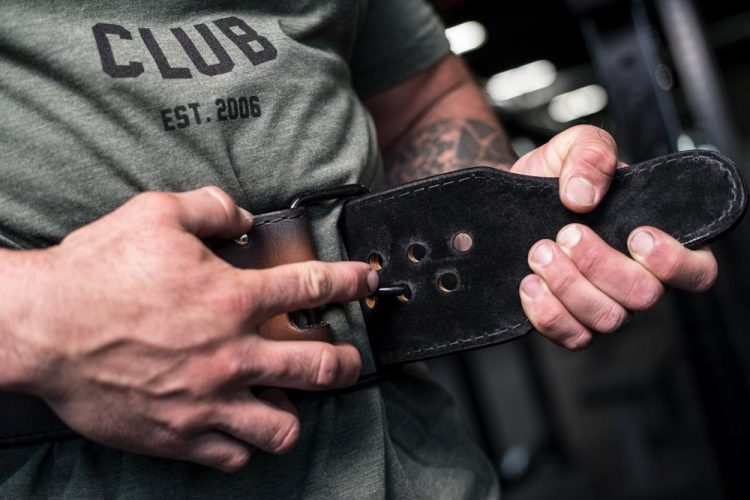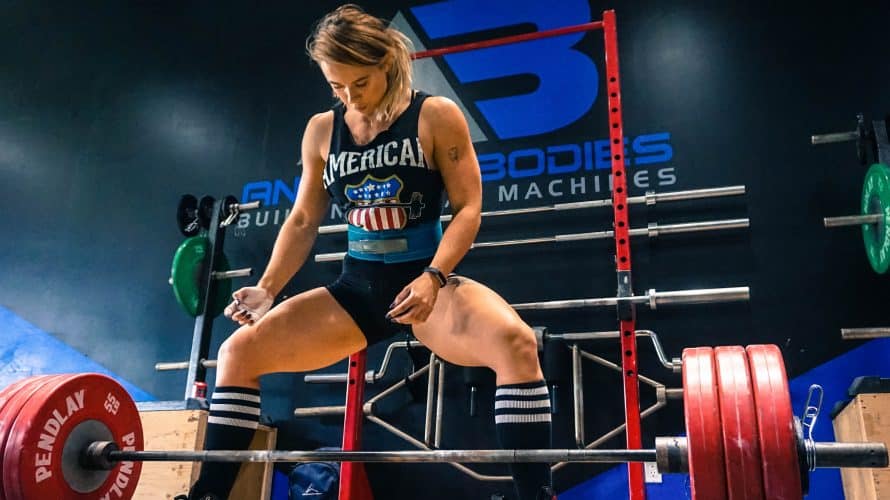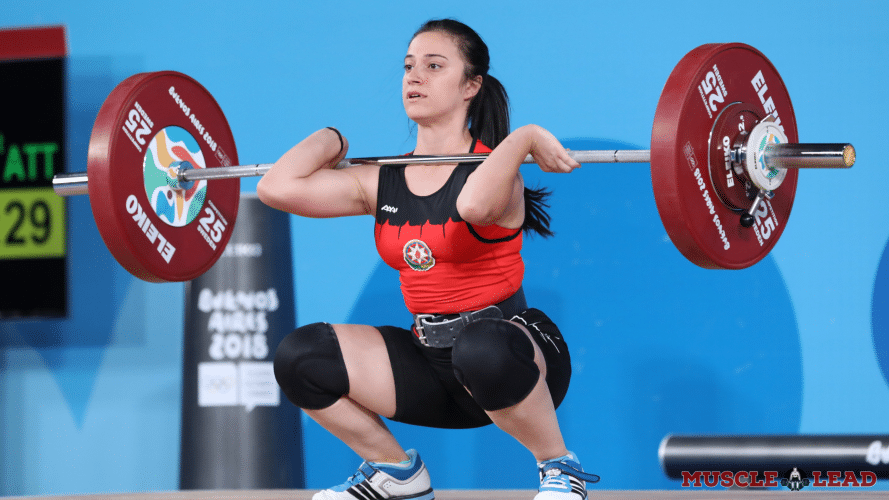Key Points
- This guide applies to all types of lifting belts like Weightlifting Belts, Powerlifting Belts, Lever Belts or Velcro Lifting Belts.
- A loose lifting belt can potentially be dangerous and prevent stabilizing your core during a movement
- Too tight of a lifting belt reduces bracing power and IAP. It can also make you less mobile or flexible.
- Improper range of motion can lead to severe injuries and muscle imbalances.
- Use the finger test method to identify an ideal lifting belt tightness level.
When I got my first weightlifting belt I remember how excited I was. I couldn’t wait to get it on and start using it in my regular workouts.
There was only one problem: how tight should a weightlifting belt be?
Weightlifting belts don’t come with a user manual. You’re expected to figure it out.
After I figured out how to wear a lifting belt, I had a challenge on how tight it should feel when locked.
During my first workout, I had the belt on too tight. My lifts suffered and I had trouble breathing. I decided to lay it back a little in my next session but now my lifting belt was too loose.
I didn’t feel the right amount of bracing. Again, my lifts suffered.
So how tight should a weightlifting belt be? Although it varies for exercise and individual, the belt should feel snug, but not hurt. You should be able to inhale breathe and brace properly without losing a step. You should be able to easily squeeze one finger between the belt and your torso while moving it across your abdomen.
First of all, I learned about what size lifting belt should I get. Once you have the correct size lifting belt, check that your belt is not fastened too tight.
I’ll explain the right amount of pressure you need to properly lift with your belt below.
How Tight Should A Weightlifting Belt Be?
Note: This guide applies to all types of lifting belts like Weightlifting Belts, Powerlifting Belts, Lever Belts or Velcro Lifting Belts.
Even if you have the perfect form in your lifting exercises, wearing a belt wrong will be dangerous. To understand why lifting belt tightness is so important, we look at the purpose of a weightlifting belt.

A weightlifting belt helps further increase IAP and bracing power. Hence, you can lift more with a belt on. The key takeaway is we are protecting ourselves when bracing correctly.
If your belt is not at the perfect tightness, you’re creating a dangerous situation for your back.
What are some physical cues you should look for if the belt is too tight or not tight enough? Let’s talk about the two situations separately.
Is Your Belt Not Tight Enough?
This situation is rare since most lifters can feel it right away.
If your belt is loose on you it will move up and down your torso easily. In addition, when you brace during a lift, you don’t feel the belt pushing back.
This situation can give lifters unrealistic expectations during movements. Imagine, as you get ready for your squat you figure you can lift more because of the belt. So you add some weight and go for a new PR.
With a loose belt, your bracing power is only slightly more than without the belt. But now you’re lifting more weight than normal. Any lifter can potentially hurt their lower back in this scenario.
Is Your Belt Too Tight?
The more common situation I see in the gym is a very tight lifting belt.
Strength trainees do it all the time. They take a big breath in and then tighten the lifting belt as much as it can go.
Lifters think that a tighter belt means more bracing power. Although this statement is somewhat true, lifting belt tightness follows the law of diminishing returns. That is, as you get tighter and tighter, the disadvantages outweigh the benefits.

At a certain level of tightness, lifters can’t breathe in as much air as they normally do because the belt restricts them. This in turn reduces their bracing power and IAP.
These lifters also experience a decrease in their range of motion. You’re not as mobile or flexible with a restricting lifting belt. Improper range of motion can lead to severe injuries and muscle imbalances.
Lastly, if you’re dealing with a Velcro or lever lifting belt, over-tightening may cause the belt to fail. Velcro lifting belts can unfasten in high levels of bracing pressure. Further, if your lever belt is years old, the chances it pops under the pressure are much higher.
The Finger Test – A n Ideal Lifting Belt Tightness
So we know if your lifting belt is too tight or too loose, but what is the ideal tightness?
An ideal answer would be anything that allows you to be comfortable and safe while lifting. But the problem with this response is it differs for everyone.
Well, there is a simple test you can use to help you find the optimal level of tightness. You’ll be using your instincts and certain physical cues I provide. During this test, you should only have two priorities: stability and comfort.
Step 1 – Mimic Workout Conditions
If you’re sitting at home to do this test, try to duplicate the gym conditions as much as you can. Wear your workout shirt or hoodie. Do this test after a meal or on an empty stomach as you were about to go to the gym.
Step 2 – Relax Your Breathing
Remember that your lifting belt will be flexible. Even the stiffest leather powerlifting belts are somewhat flexible. When gauging how tight your lifting belt should be you want to relax your abs. No tucking in the gut. And don’t brace as you would for a lift.
Step 3 – Put Your Lifting Belt On
Now you can put your weightlifting belt on your torso and tighten it. Don’t breathe in or tuck in your stomach. Breathe naturally and tighten your belt until it feels good.
Step 4 – Do the Finger Test
This step is critical to finding your perfect level of tightness for the lifting belt. If you can place one of your fingers in between the belt and abdomen, it’s perfect. Do this finger test across the length of the lifting belt.
You can also breathe in and brace as if you were about to squat. If your finger presses against your belt while bracing then you hit the sweet spot in tightness.
Step 5 – Mark This Level On Your Belt With a Pen or Marker
If you’re using a prong belt you can mark the hole which indicates your ideal level of tightness. For lever buckle belts and Velcro belts, you can use a marker at the length of the belt you pulled through the buckle.
If this test still causes your lifting belt to be too tight, make sure the lifting belt size is right for you. The weightlifting belt may also need some time to break in, especially if it’s leather. You can use our short guide to break in leather weightlifting belts more quicker.
How Tight Should A Lifting Belt Be For Deadlifts?
For deadlifts, the lifting belt can be a little tighter than you’re used to. Why you may ask? You won’t need too much range of motion at the bottom of the movement.
The belt should be at the middle of your torso and run across your bellybutton. If you’re taller you could place it across your lower abdominals to get the most from your bracing.
Why Use a Lifting Belt for Deadlifts?
How Tight Should A Lifting Belt Be For Squats?
Squats are a bit different in mechanics so you will have to keep that in mind when wearing a lifting belt.
Since you will be squatting all the way down, ensure your belt doesn’t restrict your way down. In addition, in the bottom of the movement you may lose tension if your belt is not tight enough. You will feel this sensation quite easily.
How Tight Should A Lifting Belt Be For Bench Press?
For the bench press during a powerlifting movement, your arch is critical.
Place your lifting belt a little bit higher as your arch may be messed up if it’s too low. In addition, at the top of the movement, your rib cage is flared out so don’t have the belt this high. Tightness can vary here but in general a bit tighter is best. This will help
Should I Wear a Lifting Belt for Bench Press
How Tight Should A Lifting Belt Be For Barbell Rows?
Some people do like to wear a lifting belt for barbell rows.
In this type of static exercise, your belt can be a bit tighter and placed in a neutral position over your bellybutton. The tightness can increase core activation and some spinal stability.
How Tight Should A Lifting Belt Be For Clean and Jerk?
As an Olympic style lifter, your belt tightness can really impact your explosive movements. Follow the Olympians and place your belt in a similar way as you would for squats.
Since you need a lot of range of motion for the dynamic movements, you may even want to use a Nylon lifting belt for more flexibility.
How Tight Should A Lifting Belt Be For Snatch?
Similarly for the snatch, have your belt at a position and tightness similar to the squat. This should allow some breathing room and allow for maximal bracing at the bottom of the movement.

Final Thoughts
There are some fitness and strength athletes who think you can’t gain results without pain. But don’t confuse pain with discomfort. Understanding the importance of how tight your weightlifting belt should be will help you lift more.
You can ask anyone who has ever hurt themselves while lifting how important form and comfort is.
Let me know if you have any questions or comments!
Recommended Articles:





